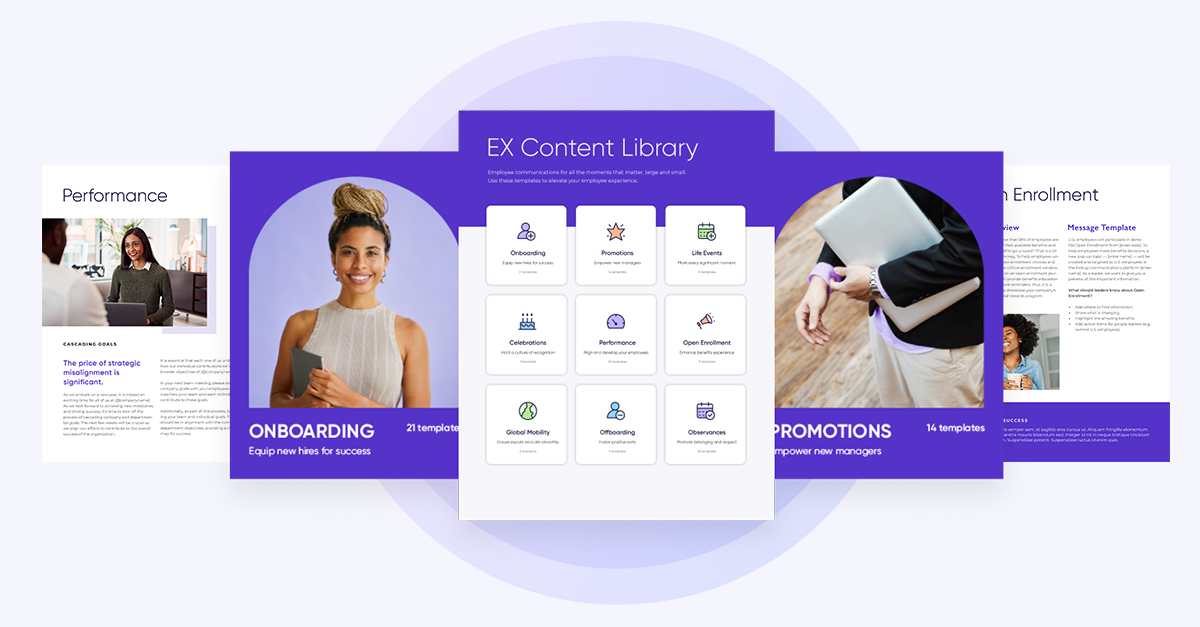The free ebook published by IC Kollectif, Disrupting the Function of IC: A Global Perspective, provides a rich source of insight into the forces at work in the internal communications industry today. Here are some key takeaways from its 30 renowned contributors.
The most effective employee advocacy programs are ones that don’t need to exist.
The best way to get an employee to advocate is to create an environment where positive communication that dovetails with management’s goals occurs organically. But of course, not everyone’s workplace is so harmonized. Dr. Leandro Herrero’s preferred approach, called ViralChangeTM, identifies “highly connected employees” who “role-model” desired behaviors and interact with their peers to demonstrate messages and actions. This is what he means when he says the best advocacy program is one that makes itself redundant as soon as possible: it becomes a way of prompting employee ownership over your organization’s goals, without direct management intervention through a “program.”
Employees give their best when there is a combination of meaningful work, workspace atmosphere, and organizational culture — it’s an outgrowth of larger workplace health. If we get this right, employees want to talk about it. In the book, Jean Shatwell says this isn’t new. “Motivated employees have always been advocates,” Shatwell says, so the trick is to aim for motivation, not advocacy itself. That’s an effect of a persistent focus on culture, atmosphere and purposeful work.
Another communicator, Priya Bates, agrees that the environment is key.
Engagement strategies must be aligned with business strategies, and have to involve all parts of the business to be successful. She suggests taking a hard look at the foundation of the “engagement system” your employees are working with, and not shying away from harsh truths: evaluate strategic business plans, what the brand is (beyond a logo), values, personality and voice, and even legal policies like codes of conduct. And “don’t be surprised if these foundations simply don’t exist,” she says.
Leaders, managers, and employees aligning to pursue common goals can make magic, she says, and generate natural advocacy from employees — but it won’t happen if the foundations aren’t there. For employee advocacy to work, it is important that employees have confidence in your brand and organization and the desire to support it, argues Saskia Jones, a communicator previously at Oxfam. Employee advocates defend against criticism and champion their organization online and off, and social media is not the only way for them to do this.
Communicators are in a unique position to identify gaps between plans and infrastructure and can help push management and employees alike to better integrate needs. Setting real engagement goals with links to performance, participation, promotion and pride, and a focus on a holistic employee engagement strategy and system is the best way to do that, Bates says. Aligning engagement strategies with business strategies is the key.
Employee advocacy is an outgrowth of larger workplace health.
Communicators have a role to play in creating both. But, as in Dr. Herrero’s example, we can’t message them into existence if they’re simply not there. That’s why Shatwell shies away from employee engagement programs at the expense of building a meaningful shift in work environment. “Engagement should not be the work of IC,” Shatwell says. “Rather, business-benefiting motivation is the outcome of strategic internal communication.”
Once that’s in place, employees will be the best brand ambassadors you could ask for. Saskia Jones says that consumers want to hear from your employees. Not supporting and encouraging your employees to share company content misses one of the biggest opportunities in social media. Employees are trusted more than CEOs, well-known personalities, elected officials, and celebrities, a recent global study found. And feeling trusted by the brand will give your employees a greater sense of purpose and buy-in, so make sure you measure and share success to thank employees for their efforts.
Push organizations beyond check-the-box engagement programs into powerful engagement strategies that turn employees into proactive advocates for the brand, advises Bates. If employees are motivated to give their best, IC has a critical role to play in determining how the business can benefit from employees’ expression of their motivation. It is the communicator’s job to be thinking creatively about how to promote and facilitate such expression.
Since the flow of information has increased so massively, authenticity is what counts. But it has to start from the top. Jones suggests not thinking about control but collaboration. Collaborate with teams across the organization and stimulate people to be courageous and share their own stories. People trust people, not corporate messaging. Empowering your employees to share with integrity and authenticity is the key to holistic advocacy. It will have much more power and reach.
Measure your internal communications
If you can’t measure success, you won’t know what’s working. A survey by Gallaher revealed that 64% of communicators don’t benchmark their internal communications against the industry. Download our free step-by-step guide to learn to measure your internal communications.





